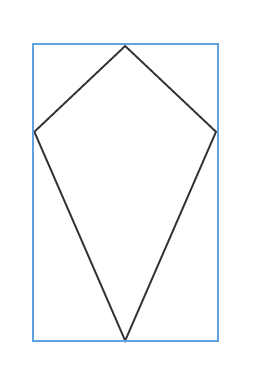All Advanced Geometry Resources
Example Questions
Example Question #1 : Graphing
Solve and graph the following inequality:
To solve the inequality, the first step is to add 
The second step is to divide both sides by 
To graph the inequality, you draw a straight number line. Fill in the numbers from 

The graph should look like:

Example Question #1 : Graphing
Points 

If we plug the points 




Example Question #2 : Graphing
Which of the following lines is perpendicular to the line 
The key here is to look for the line whose slope is the negative reciprocal of the original slope.
In this case, 

Therefore, the equation of the line which is perpendicular to the original equation is:
Example Question #201 : Coordinate Geometry
Which inequality does this graph represent?




The two lines represented are 

Example Question #1 : How To Graph A Two Step Inequality
What is the area of the shaded region for the following inequality:

This inequality will produce the following graph:
The shaded area is a triangle with base 7 and height 2.
To find the area, plug these values into the area formula for a triangle, 
In this case, we are evaluating 
Example Question #201 : Graphing
What is the area of the shaded region for this system of inequalities:

Once graphed, the inequality will look like this:
To find the area, it is easiest to consider it as 2 congruent triangles with base 6 and height 3.
The total area will then be


Example Question #202 : Graphing
Find the 




Example Question #1 : Graphing
Let D be the region on the (x,y) coordinate plane that contains the solutions to the following inequalities:


Which of the following expressions, in terms of 
Example Question #1 : How To Find The Length Of The Diagonal Of A Kite

The area of the rectangle is 
The area of a kite is half the product of the diagonals.
The diagonals of the kite are the height and width of the rectangle it is superimposed in, and we know that because the area of a rectangle is base times height.
Therefore our equation becomes:

We also know the area of the rectangle is 
Thus,, the area of the kite is 
Example Question #1 : How To Find The Length Of The Diagonal Of A Kite
Given: Quadrilateral 





Give the length of diagonal 
None of the other responses is correct.
The Quadrilateral 


. We call the point of intersection 

The diagonals of a quadrilateral with two pairs of adjacent congruent sides - a kite - are perpendicular; also, 







By the 30-60-90 Theorem, since 


By the 45-45-90 Theorem, since 


The diagonal 

All Advanced Geometry Resources
































































